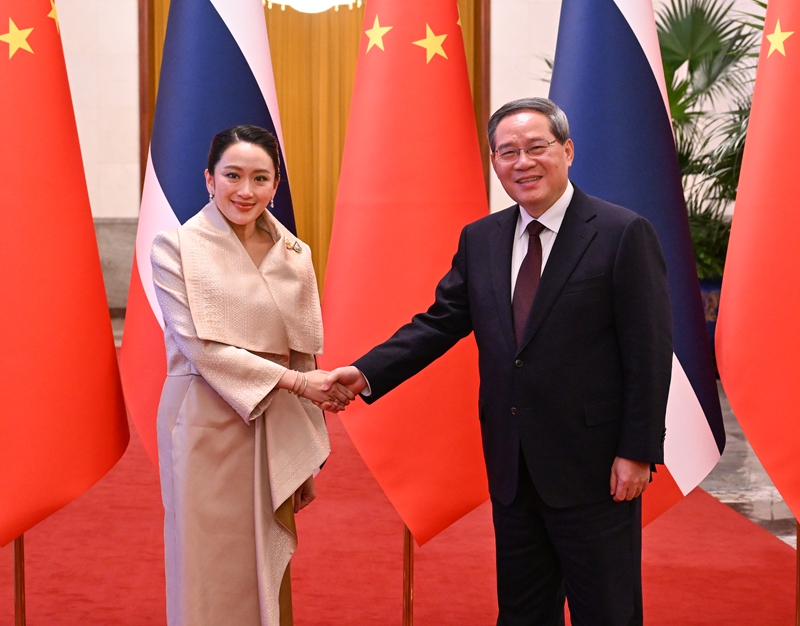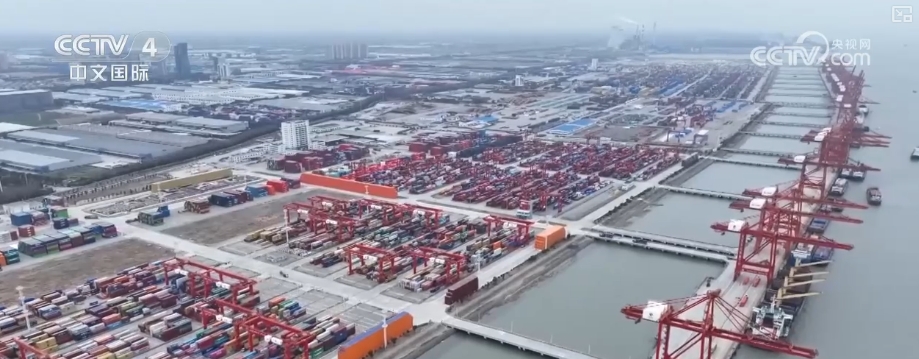Why Does Hu Huanyong's Line Force Control China For 90 Years?
Why Does Hu Huanyong's Line Force Control China For 90 Years?
Original West Window Sohu City Beijing pre-editor: This year marks the 90th anniversary of the proposal of the "Hu Huanyong Line", which is still touching people's hearts today. Sohu Cultural City has produced this video to review the history and significance of Hu Huanyong Line and explore its current price
Original West Window Sohu City Beijing
Before editing: This year marks the 90th anniversary of the proposal of the "Hu Huanyong Line", which is still touching people's hearts today. Sohu Cultural City has produced this video to review the history and significance of Hu Huanyong Line and explore its value and challenges in the present.
Use a pencil to draw a diagonal line on the map, and draw it from Heilongjiang River to Tengchong, Yunnan. In the southeast of the line, there are dense villages and continuous lights; in the northwest of the line, there are continuous mountains and winds more than people's voices.
In 1935, geographer Hu Huanyong (1901-1998) showed this line using maps and population data. For 90 years, it has been like an invisible watershed, revealing the deep distribution pattern of China's nature, population and economy.
"Southeast" and "Northwest" are the concepts of orientation that were frequently circulated in ancient China. Sages such as Sima Qian, Ouyang Xiu, and many documents describe China's geographical trend as "the sky is not enough to the northwest, and the earth is not enough to the southeast."
Not only the terrain, the "southeast" and "northwest" also show great economic and cultural differences. The pattern of China's population being "secret in the east and sparse in the west" was formed in the Southern Song Dynasty. Guo Zhiqi of the Ming Dynasty used "the people in the southeast are full, and the soil in the northwest is full" to describe the population pattern. By the reign of Emperor Kangxi of the Qing Dynasty, the idea of immigrating to colonize the border was proposed to equalize the population.
At the beginning of the 20th century, China was shrouded in the shadow of defeat in the Sino-Japanese War of 1894-1895 and indemnifying the chronic diseases of the system and cultural dysfunction, its huge population was also considered to be the "injured creditor".
Many scholars advocate moving the excess population to the sparsely populated northwest through land reclamation. In 1931, the Northeast fell, and local officials and civil wise men suggested that they settle the border and develop immigration.
It was the trouble that caused the population geography that studied the relationship between man and earth to emerge. Zhu Kezhen, Weng Wenhao and others began the enlightenment of China's population geography. The traditional understanding of "the people in the southeast are full, and the soil in the northwest is full" has gradually been revealed in the process of modern scientific research.
At that time, Hu Huanyong, 34, was the director of the Department of Geography of Central University (now Nanjing University), discovered the pattern of China's population distribution and published "The Distribution of China's Population" in 1935.
"This is a test that starts from Aihui (now Heihe) in Heilongjiang, making a straight line to the southwest, and ends at Tengchong in Yunnan, and is divided into two parts: southeast and northwest... The difference between the large and the small is so great." The article also contains China's population distribution map and the first population density map.
This geographical discovery was completely drawn by Hu Huanyong by hand and then calculated through manual "big data". At that time, China's total population was about 480 million. Hu Huanyong represented 20,000 people with one point, landed more than 20,000 points on the map, and then drew a density map with contour lines.
Hu Huanyong keenly discovered that there is a linear outline of the differences in China's population density: he calculated that the southeastern half of the qualifying line supported 96% of the country's population with 36% of the land; while the northwest half of the qualifying company owns 64% of the land, but only supports 4% of the population.
The "Aihui-Tengchong Line" did not appear in the attached picture of the article. It was not until 1989 that Hu Huanyong and Wu Li used the latest statistics to re-draw the population distribution map and density map, and this mutation line that showed China's population density was implemented on the map.
Since ancient times, it seems that it has become a fact that the southeastern China has been narrow and densely populated, and the northwest China has been sparsely populated, but no one has clearly summarized and proved this vague understanding. The "Aihui-Tengchong Line" has become the finishing touch in China's population geography.
Since it has been widely cited by scholars at home and abroad, this line is called the "Hu Huanyong Line". As time goes by, people gradually discovered that the Hu Huanyong line overlaps with the iso-rain line, the landform region, and the dividing line of cultural transformation.
One of the multiple identities of Hu Huanyong Line is the climate dividing line. The 400mm precipitation line in mainland China is the dividing line between the semi-humidity zone and the semi-arid zone.
In the northwest of the line, it is blocked by plateaus and is difficult to reach water vapor. The annual precipitation is less than 400 mm, and a large area of grasslands and deserts are distributed; in the southeast, the warm monsoon from the ocean meets the cold air in the north to form abundant rainfall, distributed with vast plains and dense water networks.
The Hu Huanyong line is also the dividing line between the first and second steps and the second and third steps of China's terrain.
From the Greater Xing'an Mountains in the northeast to the Hengduan Mountains in the southwest, among the series of mountains that make up the Hu Huanyong Line, the southwest end is the most unexpected. It suddenly turned north-south in the eastern part of the Qinghai-Tibet Plateau, as if it was intentional to cooperate, allowing the Hu Huanyong Line to end perfectly at the southwest end.
The Hu Huanyong line is also the dividing line of nomadic farming culture. Some of the ancestors lived in the northwest plateau and made a living by hunting and animal husbandry, forming grassland tribes such as Tubo, Xixia, Liao and Jin, and Mongolia; the other part expanded the territory and planted grains in the southeast half of the wall, fostering a developed farming civilization.
Different lifestyles and regional cultures are very different. Southeast literati and poets made their mark by fame, chanting green trees, green mountains, rice fragrance, frogs croaking, and white apricots and yellow pears, reflecting a comfortable and comfortable life; the northwest golden swords and iron horses are daily life, horses sing, wind blowing, and lonely smoke from the desert. The frontier poems are their own lineage with their heroic and magnificent nature.
The Hu Huanyong line reflects the economic and geographical characteristics of China in 1935. Since then, the border settlement, construction of the third line, and reform and opening up have affected the population and economic distribution to varying degrees.
However, 90 years have passed, Hu Huanyong's line remains "still" and maintains strong vitality. The overall pattern of dense population in the southeast and sparse population in the northwest has not improved.
The 2020 Seven-Popular Results show that the population on the east side of the line accounts for 93.5% of the total population in the country, and the population on the west side of the line accounts for 6.5%, which is not much different from Hu Huanyong's first statistical results - Hu Huanyong's line still controls the division line between southeast and northwest of China.
In fact, if the climate does not change significantly, it will be difficult for Hu Huanyong's line to be broken through. And, even if climate changes, landform constraints still exist. Perhaps, the Hu Huanyong line is not a line that needs to be broken through, but a line that needs to be understood.
The yin alone does not grow, and the yang alone does not grow. Without the surging crowds east of the Hu Huanyong Line, there would be no prosperity in China; without the snow-capped mountains and glaciers west of the Hu Huanyong Line, there would be no Yellow River and the Yangtze River to moisten the land of China all the way east, and there would be no prosperity in China.
The Hu Huanyong line is a mirror that allows us to see the structure and reality of China; it is also a rope that ties the two worlds together, pulls them around, and finally finds a new balance point. It is not a fracture zone, but a connection zone; it is not a crack, but a joint.
Hu Huanyong's handmade work leaves us with more than one line, but also a kind of vision of identifying people from the ground and planning the situation according to the situation. As long as people are still moving, water is still flowing, and the story continues, this line is not just a line, but a warm pulse on the Chinese territory.
Coordinator Qi Yao
Copywriting/Duttering West Window





